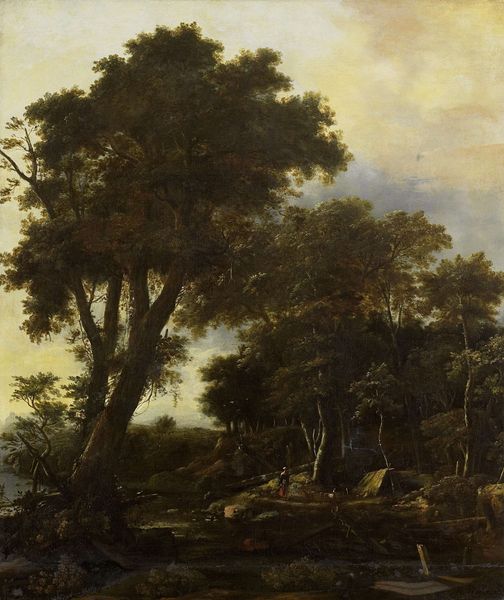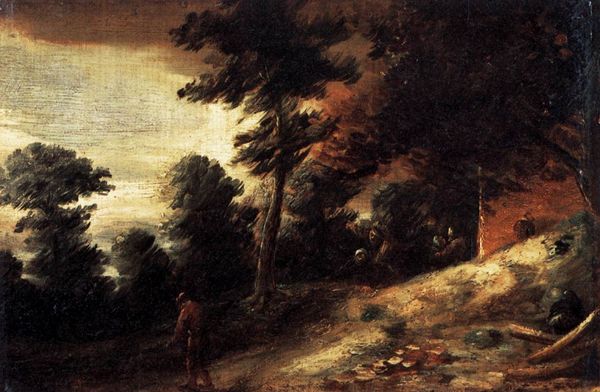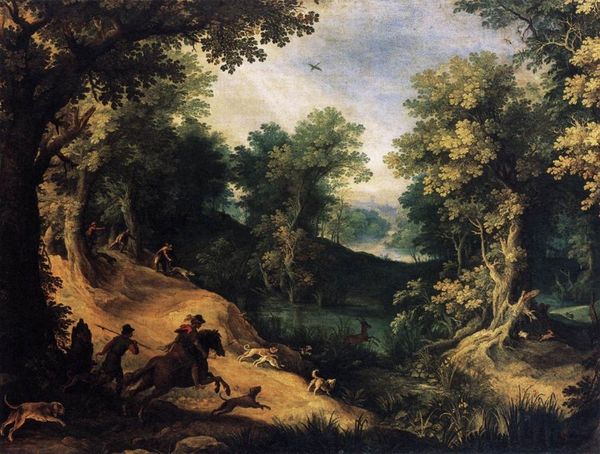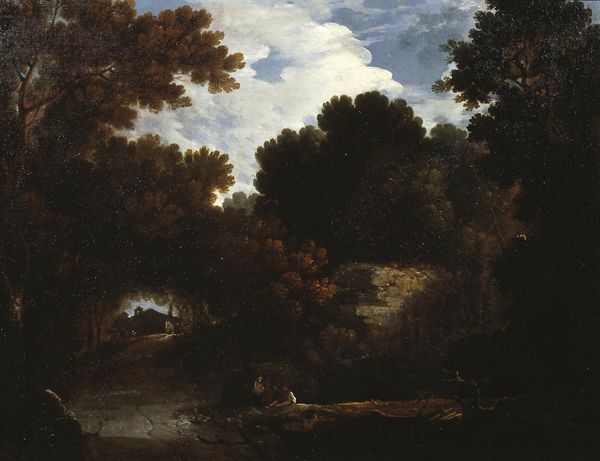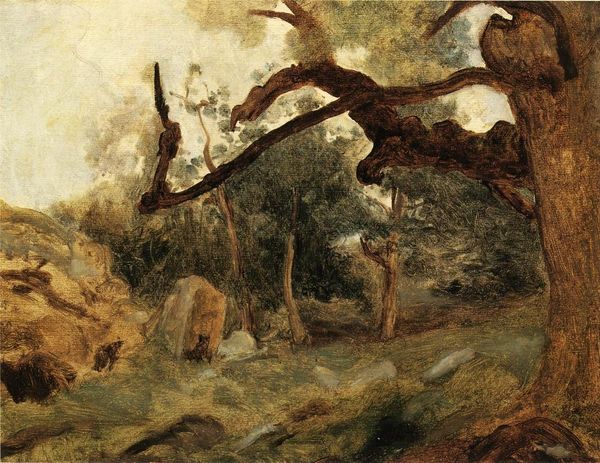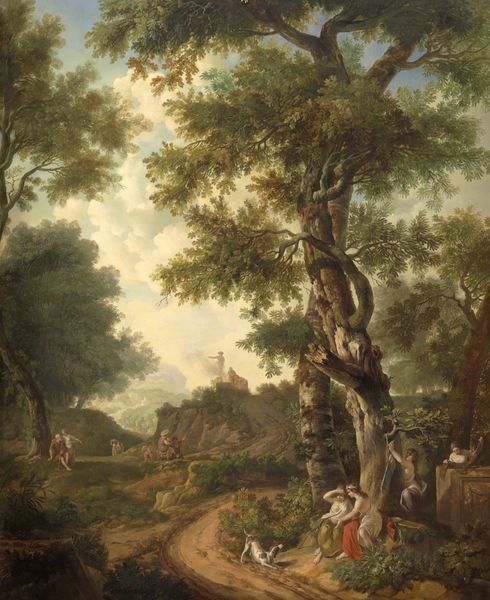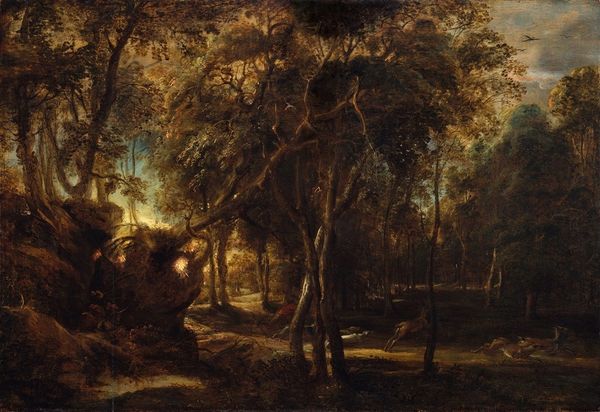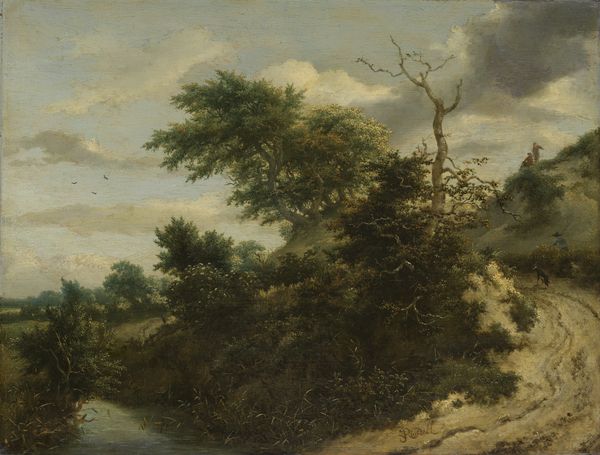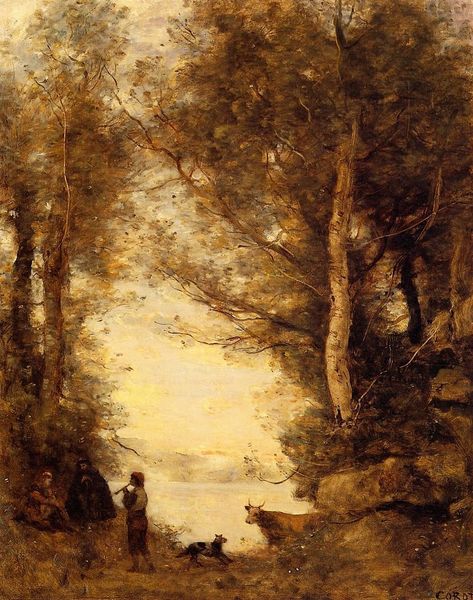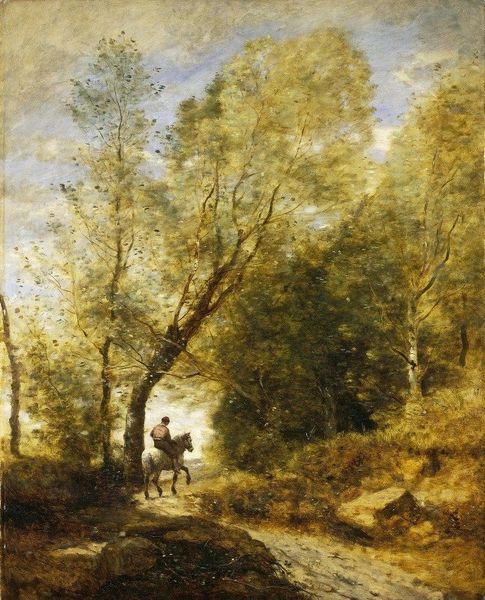
The Happy Isle 1868
0:00
0:00
jeanbaptistecamillecorot
Montreal Museum of Fine Arts (MMFA), Montreal, Canada
Copyright: Public domain
Editor: This is "The Happy Isle," an oil painting by Camille Corot, completed in 1868. It gives me a very dreamlike feeling, almost hazy, with the muted tones and soft brushstrokes. How do you interpret this work, especially considering its historical context? Curator: Corot's work, particularly this piece, emerges within a complex historical framework. On one hand, it participates in the romantic idealization of nature, offering a nostalgic vision of an untouched landscape, almost utopian. Yet, considering the period, can we really separate it from the rapidly industrializing world it subtly ignores? Do you notice how the figures are dwarfed by the landscape? Editor: Yes, they almost blend into the trees; they look like they belong there. So, are you suggesting the painting might be commenting on the relationship between people and nature, maybe even critiquing it somehow? Curator: Precisely. Consider also the title, "The Happy Isle." What does happiness signify during a period marked by stark social inequalities and colonial expansion? Is this isle a refuge, accessible to all, or an escapist fantasy available only to a select few? And what is it masking about society at the time? Editor: I see what you mean. I initially saw only the surface beauty, but understanding the historical undercurrent adds so much more depth. The romanticism is almost a veil, isn’t it? Curator: Exactly. By understanding the socio-political dynamics of the time, we see how even seemingly serene landscapes can be imbued with complex, often contradictory, messages about identity, belonging, and power. We’re constantly looking for windows into history that help inform modern inequities, how do we continue using this art in conversations? Editor: That's a powerful re-framing. I’ll definitely look at landscapes differently now.
Comments
No comments
Be the first to comment and join the conversation on the ultimate creative platform.

